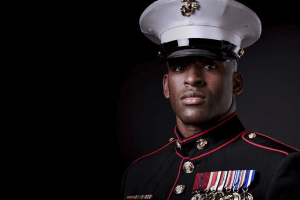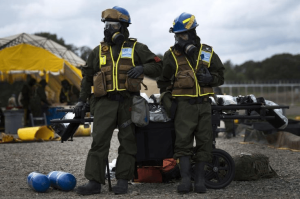Marines Died Carbon Monoxide Poisoning
The loss of our brave Marines is a somber moment that deeply impacts our nation. In this article, we will discuss the tragic incidents in which Marines lost their lives, shedding light on the circumstances, the sacrifices made, and the support provided to their families.
Our brave men and women face countless dangers daily. From training exercises to combat zones, they are constantly prepared to confront adversity. However, one peril that might not immediately come to mind is the silent, odorless, and potentially lethal threat of carbon monoxide poisoning. In this article, we will delve into the tragic incident where Marines faced carbon monoxide poisoning, the science behind it, and the measures taken to prevent it.
We must never forget the sacrifices they make in the name of our freedom and security. Their legacy lives on, and their memories are cherished by a grateful nation. Also, read about Is Dwayne Johnson Arrested?
Understanding Carbon Monoxide Poisoning
Carbon monoxide (CO) is an invisible gas produced by incomplete combustion of carbon-containing fuels like gasoline, natural gas, and wood. When inhaled, CO binds to hemoglobin in the blood, displacing oxygen, which can lead to hypoxia and severe health consequences.
The Tragic Incident
A recent incident brought this danger to the forefront. A group of Marines faced a carbon monoxide leak in their barracks, resulting in severe health consequences and even casualties. The incident underscores the importance of understanding and preventing carbon monoxide poisoning in military facilities.
Immediate Responses and Investigations
Following the incident, immediate responses were initiated to ensure the safety of the affected Marines. Investigations were launched to determine the cause and to prevent such incidents in the future. This tragic occurrence emphasized the need for awareness and preparedness. For more interesting information visit our website thenewzwave.com
What is Carbon Monoxide?
To understand carbon monoxide poisoning, it’s essential to comprehend the gas itself. Carbon monoxide is colorless, odorless, and tasteless, making it difficult to detect without specialized equipment. This silent killer can strike without warning.
How Does Carbon Monoxide Poisoning Occur?
Carbon monoxide poisoning occurs when individuals inhale elevated levels of CO. It interferes with the body’s ability to transport oxygen, leading to symptoms ranging from mild headaches to fatal consequences, depending on exposure levels and duration.
Symptoms of Carbon Monoxide Poisoning
The symptoms of carbon monoxide poisoning can be subtle, often mimicking those of the flu or other illnesses. Headaches, dizziness, nausea, confusion, and fatigue are common signs. As exposure increases, symptoms can escalate to unconsciousness and death.
Risks of Carbon Monoxide Poisoning in Closed Spaces
Closed spaces, like barracks and military vehicles, present a higher risk of carbon monoxide buildup due to poor ventilation. It’s essential to recognize these risks and implement preventive measures.

The Role of Carbon Monoxide Detectors
Carbon monoxide detectors are vital tools in preventing poisoning incidents. They can detect rising CO levels and sound alarms, providing early warning to inhabitants.
Prevention Measures
Preventing carbon monoxide poisoning involves proper maintenance of equipment and facilities, adequate ventilation, and education about the dangers of CO. Military personnel must be trained to recognize the symptoms and take immediate action if they suspect a leak.
Carbon Monoxide Poisoning in Military Facilities
Military facilities, including barracks and training areas, are at risk for carbon monoxide poisoning due to the use of equipment and vehicles that produce CO. Regular inspections and maintenance are crucial to ensure safety.
Safety Protocols in the Marine Corps
The Marine Corps, like all military branches, has strict safety protocols in place to minimize the risk of carbon monoxide poisoning. These protocols include regular equipment maintenance, CO detector installations, and comprehensive training.
Support and Counseling for Affected Families
In cases of carbon monoxide poisoning incidents, the families of affected Marines also need support. The military provides counseling and assistance to these families during recovery and rehabilitation.
The Marine Corps War Memorial
One of the most iconic symbols of Marine sacrifice is the Marine Corps War Memorial, often referred to as the Iwo Jima Memorial. This monumental sculpture depicts the raising of the U.S. flag on Mount Suribachi during the Battle of Iwo Jima in World War II. It is a symbol of valor, unity, and the indomitable spirit of the Marine Corps.
Stories of Courage
Behind every Marine who lost their life, there is a story of courage, dedication, and service. These stories are vital to understanding the profound impact of their sacrifice. From World War I to the modern-day War on Terror, Marines have shown unwavering commitment to their duty.
Learning from Loss
While we mourn the loss of these brave individuals, their sacrifices teach us valuable lessons. Their dedication and heroism inspire us to cherish our freedom, value the principles for which they fought, and work toward a more peaceful world. It’s a reminder that the price of freedom is often high.
Continued Service
The loss of Marines does not diminish the resolve of the Marine Corps to protect and serve the nation. It is a reminder of the ongoing commitment to upholding the values and security of the United States. Marines, past and present, continue to stand ready to answer the call of duty.

Support for Veterans
In addition to supporting the families of fallen Marines, there are various organizations dedicated to helping veterans who have served and returned. These organizations provide assistance in the form of healthcare, education, employment opportunities, and mental health support. It’s a way to honor the service and sacrifice of all veterans.
Conclusion
Carbon monoxide poisoning is a hidden threat that can affect anyone, even our brave Marines. Understanding the risks and taking preventive measures is paramount. The recent incident serves as a reminder of the importance of constant vigilance and preparedness in the military.
FAQs
- How can I protect myself from carbon monoxide poisoning in my home?
Install carbon monoxide detectors.
Ensure proper ventilation in your living spaces.
Regularly service gas appliances and heating systems.
- Are there long-term health effects of carbon monoxide poisoning?
Yes, depending on the severity of exposure, it can lead to lasting health issues, including neurological damage.
- Do carbon monoxide detectors need regular maintenance?
Yes, they should be tested regularly to ensure they are functioning correctly.
- What should I do if my carbon monoxide detector goes off?
Evacuate your home or building immediately and call 911.
- Is carbon monoxide poisoning preventable in military facilities?
Yes, with proper maintenance, training, and CO detectors, the risk can be minimized.
